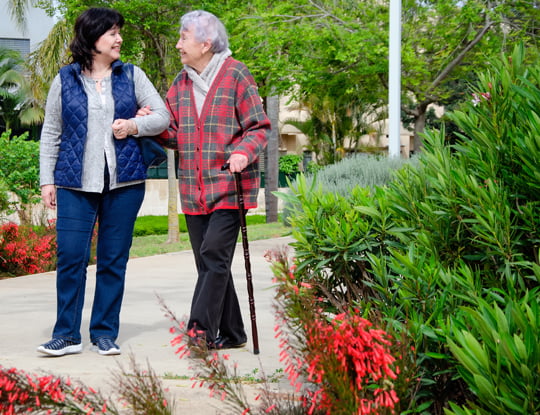By Alex Tisthammer

Garden refuges serving as calming environments date back as far as 2000 BC in Mesopotamia. Persians in 500 BC created gardens that were arranged harmoniously, had calming water features, and were centered around satisfying all the senses. Not only is being in nature enjoyable, but it also can improve many aspects of mental health, concentration, and focus. During the height of the COVID pandemic, many (including myself) sought refuge in their backyards, wanting to create spaces to retreat to that might alleviate some of the immense stress that was going on in the outside world.
“When the world wearies and society fails to satisfy, there is always the garden”
– Minnie Aumonier
It comes as no surprise that horticulture therapy has been shown to have a myriad of benefits even beyond mental health. It can help with developing motor skills, deeper concentration, stamina, hand-eye coordination, and a sense of independence and control. Depending on who the therapeutic garden is for, it can be as specific or as vague as it needs to be. It can simply be a calming environment for you to escape to at the end of the day, or a garden specifically for people with disabilities. Therapeutic gardens are designed to meet the particular needs of a specific patient population. There are several different types of therapeutic gardens. Sensory gardens, healing/restorative gardens, enabling gardens, and rehabilitation gardens. In many cases these different types can intertwine and merge to meet multiple needs.

A sensory garden is pleasing and stimulating to various senses. Plants that are medicinal or edible are very commonly incorporated because they often stimulate more than one sense. We have a couple of wonderful sensory gardens not too far from home, one at The Gardens on Spring Creek and another at the Denver Botanical Gardens. Gardens on Spring Creek’s Fragrance Garden is designed to highlight plants that are aromatic, either their flowers or foliage. The raised bed format makes it more easily enjoyed by people of all abilities. DBG’s sensory garden is centered on providing an immersive area where visitors can interact with plants in a calming environment and promotes health and wellbeing through sensory engagement. The area is also where the Gardens hold therapeutic workshops and activities.

Healing and restorative gardens are synonymous with each other. These gardens help reduce stress, relieve symptoms, improve wellbeing, and provide a sense of hopefulness. If you are interested in creating one of these gardens for yourself or for a loved one, it should be in an environment that is somewhat quiet, somewhere that feels like you’re away from the stress of everyday life. A water feature is often used for a pleasant background noise. Plant grasses, shrubs, trees and perennials that benefit the person experiencing the garden as well as the creatures that will inhabit it. Grasses provide food and shelter for pollinators and are calming to look at and listen to when the leaves sway in the breeze. Shrubs like elderberries and serviceberries are excellent food sources for birds. Asters, penstemon, and salvia are great for butterflies, hummingbirds, and bees. Plants that bring back fond memories through touch, taste, or smell are wonderful for people with Alzheimer’s or other forms of dementia.

Another approach to therapeutic spaces is creating enabling gardens. These are created to be adaptive to people of all ages and abilities. This includes having handicapped-accessible pathways and entrances, an easy to navigate (usually circular) layout, planter boxes and potting benches of various heights to allow access for everyone, and adaptive tools kept in an easy access tool shed. Providing shady areas to sit and enjoy the garden is also very important for those that choose to enjoy the garden in a more secluded setting. This is another situation where sensory plants are used. For example, visually appealing plants are good for some but for the visually impaired it’s important to have plants that are enjoyable to touch and smell.

Rehabilitation gardens are designed to be an extension of the therapies and services that are offered in the hospitals or rehabilitation centers where the gardens are located. Walking along pathways, steps and using benches are furthering the rehab process in a more relaxed and enjoyable setting than inside the hospital. In Sweden these types of gardens were developed for people with stress disorders like burnout and fatigue, the most common cause of sick leave in the country since the 1990’s. A study of one of these gardens showed that asking patients to do activities related to nature and seeing the metaphors about life within gardening (raking leaves, sowing seeds, weeding, etc) enhanced the progress of more traditional therapies.
There are a variety of different therapeutic gardens that can be created for a variety of different people. You can create something for yourself or a loved one with any space you have, whether it be a few potted herbs on a patio or a whole landscape to enjoy and heal in. Create something that you can find joy in and connect with the outside world.
“The lesson I have thoroughly learned, and wish to pass on to others, is to know the enduring happiness that the love a garden gives.”
-Gertrude Jekyll
Originally published on October 4th, 2022. Updated on March 3rd, 2023.
